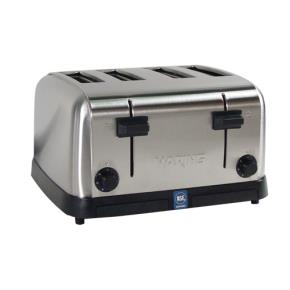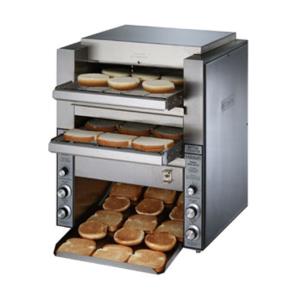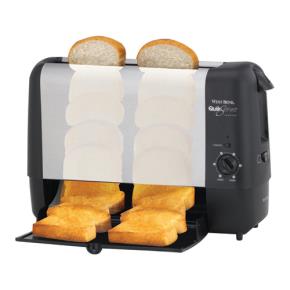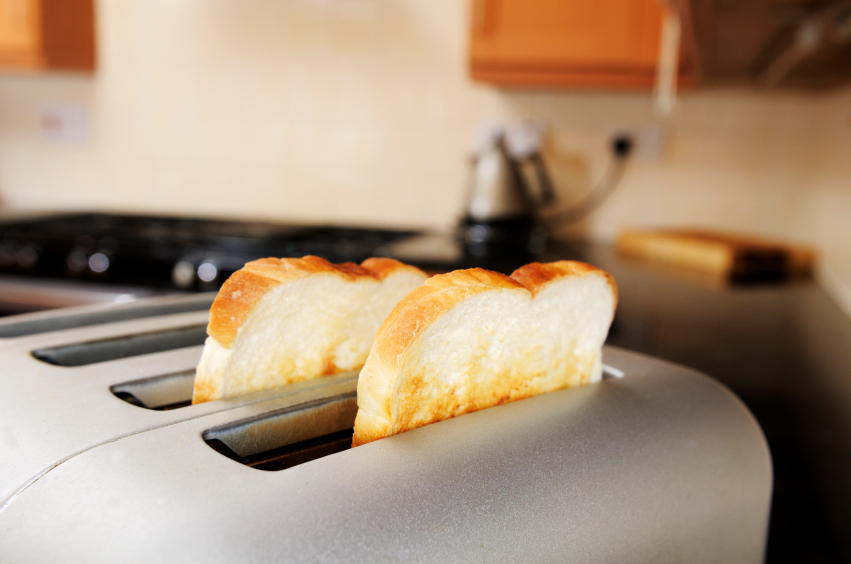Unless you’re in the bread business, the likelihood of you having to dig into the logistics of toasters probably isn’t high on your list. But for those delis and breakfast joints, making sure the bread is toasted just right is essential to business. Besides, what would a great burger be without a buttered, toasted bun? This toaster guide goes through several factors you should consider when investing in a new toaster for your restaurant or food service business.
1. Brand and Cost
Brands aren’t as important to some people as other factors, but for others, the difference in the brand can make or break the deal. The good news is that there are many different well-known brands that manufacture different types of toaster ovens. And because there are different types, sizes, manufacturers, etc., the price is dependent on a lot of factors that we’ll go through below, but for reference, a toaster can go from $75 to $3,000. But that beefcake of a toaster at the high-end is able to produce 1,000 slices of toast per hour!
2. Type
There are essentially 2 types of toasters: a pop-up toaster and a conveyer toaster. The pop-up toaster is what most people are used to seeing in their homes, but a commercial pop-up toaster is made to hold up in a kitchen where it would be used much more than a home toaster ever would. In fact, even though it’s our smallest toaster, the Waring WCT702 is capable of doing 30 slices of toast per hour.
A conveyer toaster can toast bread on one-side or both sides (or can be adjusted to do either), and is capable of producing anywhere from 350 slices per hour to 1,100. Some conveyer toasters even come with a butter roller so that you can butter the buns easier.
3. Dimensions
Like home toasters, commercial toasters are made to fit on the counter, but they do have dimensions that you should think about before investing.
Equipment Size
First off, make sure the toaster will fit the space you’d like to have it placed. Our smallest toaster is the size of a regular home toaster, but our largest one is 24”H x 34”W x 26”D. Remember to always measure the space before you buy any piece of equipment.
Slot Width and Conveyer Width
Depending on the size of bread you’ll be toasting, you’ll want to pay attention to the width of the slots of a pop-up toaster and the width and clearance of a conveyer toaster. There’s a big difference between a normal slice of white bread and a slice thick of Texas toast; just like there’s a difference between the size of English muffins, bagels, hoagies, etc. Ranges for slot width and conveyer width and clearance are as follows:
- Slot widths range from 1” to 1 5/8”
- Conveyer widths range from 10 ½” to 14”
- Clearance for a conveyer toaster range from 1 ½” to adjustable (usually up to 3”)
- Clearance is for the amount of space the bread has to pass through the conveyer
 4. Chambers & Slots
4. Chambers & Slots
As you probably know, a pop-up toaster has different numbers of slots: they can come with 2 slots, 4 slots, or 6 slots. But conveyers have chambers, which is the place where the bread is laid to enter the toaster. Conveyers can come with 1 chamber or 2 chambers, and the toasters that come with 2 chambers have variable heat controls so you can toast sliced bread at one heat setting, and buns at another.
5. Heat Control
With pop-up toasters, you usually won’t have the option to adjust the temperature. You can adjust the time the bread is in the toaster, so that it doesn’t cook as long, but the temperature stays consistent.
Conveyer toasters usually have more options when it comes to the heat source, including being able to adjust the temperature or turn one element off so that you can toast only one side of the bread. Conveyer toasters specifically for bun grilling only heat on one side, but the temperature for that element is typically still adjustable.
The importance of being able to adjust temperature, is because it will give the bread a different affect (flavor if you will), which may be important for some recipes. The temperature setting also has an effect on how much bread can be toasted per hour.
6. Slices of Toast Per Hour
The number of slices the toaster puts out per hour is highly dependent on how much you will be using the toaster. If you’re running a continental breakfast, a pop-up toaster would work out fine, but a burger joint would fit better with a conveyer toaster.
Think to yourself, how much toast are you really going to need every hour? Is the business going to grow, and need more toast in the future? The answer to these questions will help you find if that toaster that is capable of doing 30 slices per hour is the right for your business, or if the one that does 1,100 slices per hour is better.
7. What Kind of Bread Can it Toast
This fits with slot width, conveyor width, and heat control, but the type of bread you’ll be toasting is important to think about too. The toaster has to have enough clearance so that the bread will fit  into the equipment. If the slot width is 1” and you’re cooking 1” Texas toast, well, that’ll be a tight fit.
into the equipment. If the slot width is 1” and you’re cooking 1” Texas toast, well, that’ll be a tight fit.
Also, if all you’re going to be toasting is buns, then a conveyor toaster with only one heating element will do you good. But always remember, if you’re planning on expanding into other recipes in the future that may need two heating elements, you may want to go with a conveyor toaster with adjustable heating elements (where one side can be turned off, and turned back on when needed).
8. Volts, Amps, and Watts
And we can’t end this without reminding you to always take a look at the voltage, amps, and watts of any equipment, before you make a purchase. We don’t want anything bad to happen, but if you need a quick rundown on what to consider, take a look at this how-to guide on watts, amps, and volts.
In Closing
If you still have questions on what toaster is right for you, give our sales team a call at 888-388-6372 or use our Live Chat feature at the top of our main website.
 Corner Booth Blog | TundraFMP Restaurant Supply, News & Equipment Blog
Corner Booth Blog | TundraFMP Restaurant Supply, News & Equipment Blog




